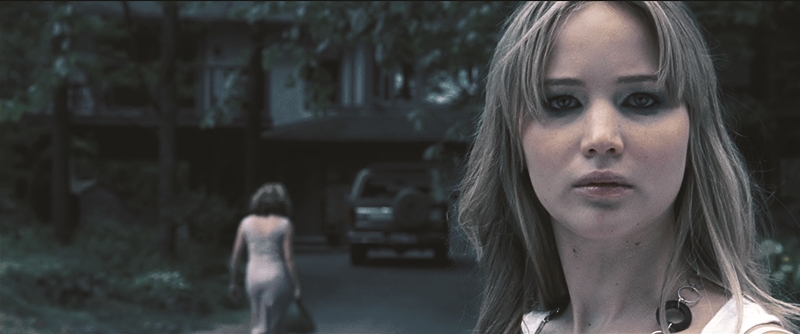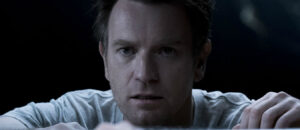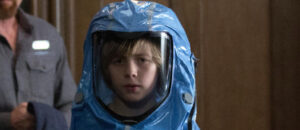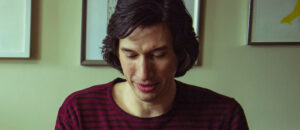Still slogging through my Netflix queue of recommendations, I continue my search for some spooky fun to celebrate this Halloween season. This week, I stumbled onto one horribly stupid teen thriller, but also discovered a surprisingly amusing documentary.
‘House at the End of the Street’
Jennifer Lawrence turns in a good performance as a very unlikeable, irritating and largely exasperating teen girl in this forgettable, horrendously dull psychological thriller. The plot tries – but fails miserably – to be about a pair of brooding kids (Lawrence and Max Thieriot, both acting too smart for their supposed ages, the sort of teenagers only imagined in fiction). In a small community of busybodies, they’re the victims of traumatized childhoods, as well as the town’s endless gossip. However, the only real victims here are Lawrence and Elizabeth Shue, who plays the former’s overly-protective mother. The story relies too heavily on the stupidity of its characters and much too convenient plot devices to generate an air of terror and suspense. Sadly, the air is more vexing than capable of building a frightful experience. Admittedly, the shocking twist is unexpected, and serves as a nice touch to an otherwise pointless movie. But putting the clues together to solve the mystery is not fun in the slightest, and is likely to lead to more confusion than understanding.
Radio disc jockey turned filmmaker Mark Tonderai follows his leading protagonists, Elissa (Lawrence) and Ryan (Thieriot), as if he were shooting a pair of the most generic gnomes he could find, surrounds them with trees, and makes them utter asinine dialogue meant to show how gifted and insightful they are. Sadly, the opposite is true, and the two kids come off incredibly annoying with no redeeming qualities whatsoever. Thieriot is so weird and distant that it’s more off-putting than sympathetic. Lawrence fares even worse as a nosey, haughty brat in a need of a spanking. Granted, the young actress does her best to make Elissa something like a heroine, but the character is simply odious to the core, contemptuous for no apparent reason except for when the narrative conveniently devises some random, out-of-the-blue excuse. The script is riddled with arbitrary conveniences to achieve a final reveal that drags for another twenty minutes, succumbing to tired scare tactics and making us suffer in this house at the end of the street longer than we want to.
Rating: 




https://www.youtube.com/watch?v=kh_8KF_RNcc
‘Room 237’
It largely goes without saying that Stanley Kubrick’s terrifying masterpiece ‘The Shining‘ is one of the most cerebral, complicated and elusive horror films ever made. Since its theatrical premiere, it has invited endless academic study and discussion. It’s a beautifully and intricately calculated motion picture that contradicts its deceivingly simplistic visuals just enough to attract general audiences and be enjoyed as a genre flick, while also welcoming thoughtful analysis from more demanding moviegoers. Each scene, camera shot, subtle piece of music and edit is so meticulously designed that the film sprawls with a great deal of stimulating information. Over the years, it has inspired hundreds of varying interpretations about what Kubrick was trying to express, and some are downright bonkers. Relatively new filmmaker Rodney Ascher has collected the wildest and most creative of those thoughts in the surprisingly entertaining documentary that takes its title from one of the film’s most memorable moments.
As various clips from other movies play on the screen (scenes from Lamberto Bava’s ‘Demons’ are the oddest), the voices of Buffy Visick, Bill Blakemore, Geoffrey Cocks, Juli Kearns, John Fell Ryan and Jay Weidner explain their individual analyses along with some background information and anecdotes about their first experiences with Kubrick’s classic film. Probably the most fruitful and interesting is that of reading the Native American artwork in the hotel as symbolizing America’s history of mass genocide. However, the connection with the Torrance family is never fully established.
A little kookier is trying to interpret the visuals as representing a disgust toward Nazi Germany and the Holocaust. The wildest interpretation in the documentary is also connected to one of the craziest conspiracy theories of the 20th Century. Based on mostly flimsy but admittedly intriguing evidence, Weidner proposes that the film is a labyrinth of clues where Kubrick admits to faking the Apollo 11 moon landing. (You can watch his theory in its entirety on YouTube.)
Crazy as these theories are, I’m impressed with what Ascher has done and how he has sorted these thoughts into an amusing documentary that ultimately proves that Kubrick’s genius as a filmmaker was his ability to inspire the imagination of his audience.
Rating: 









Shannon Nutt
I think the mere presence of Jennifer Lawrence should at least rate 1 star. 😉
Chad Rouch
Yeah, I gave “Room 237” a try. It started out promising enough with the dissection of the Native American imagery – although to say that the film is ONLY about that is stretching the very idea of subtext.
But each ensuing theory on the film got more and more crackpot, culminating in the absurd idea that the film is Kubrick admitting to faking the moon landing. If they would have focused on stuff that’s explicitly there (the idea that Danny was molested by his father is only touched on briefly) it would have been far more interesting. But focusing on the silly stuff made it very dull